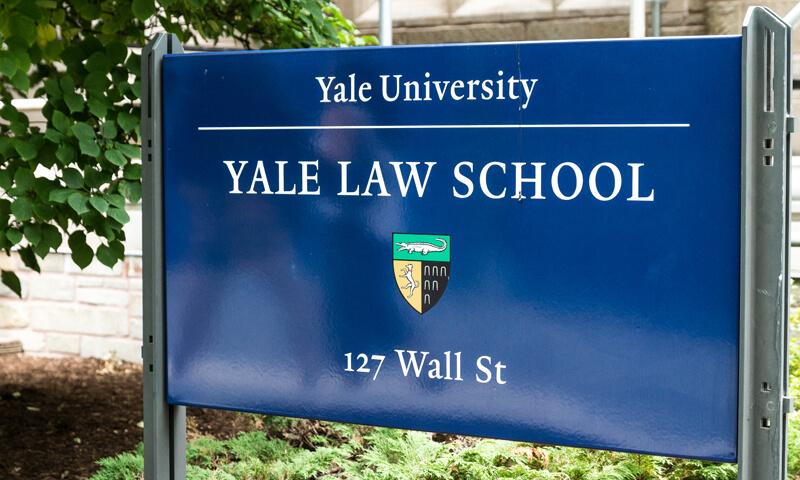Summary: The American Bar Association implemented a new policy that required more detailed employment data from law schools. Now, many law schools are reporting data that is not required by the ABA to demonstrate transparency in their employment rankings.
According to the Daily Tar Heel, activists are fed up with the lack of transparency in law school employment reports. The University of Virginia Law School boasts the Number 8 ranking on U.S. News and World Report, and it also lists a 95.6 percent employment rating within nine months of graduation, the highest employment rate in the United States.
The catch is, roughly 16 percent of those employed graduates have jobs that are funded by the law school. In the rest of the country, about 62.2 percent of 2013 law school graduates reported having a full-time job within nine months of graduation that required passing a bar examination.
Therefore, many schools have initiated fellowship programs to assist these students who just can’t seem to find full-time work. When these jobs are accepted by graduates, it’s considered full-time employment when the school later reports employment data.
In the top 10 schools that U.S. News and World Report ranked, six schools fund such positions for a minimum of 5 percent of graduates.
One school that does not have such a program is University of North Carolina School of Law. Its employment rate is approximately 69 percent, which gives it an employment ranking of number 33 in the country.
Brian Lewis, assistant dean for career development at UNC School of Law, said, “It does hurt us in the rankings. Our employment numbers aren’t as good as other schools that are counting people they’re paying as employed. But we’ve tried to be as transparent as possible.”
Troy Homesley, a first-year UNC law student, said it was difficult to make sense of the employment data that law schools report. “It was sometimes difficult to get a clear answer,” he said.
When ranking a law school, U.S. News and World Report factors its employment rate into a school’s score. This also includes the types of jobs the graduates hold, the duration of a job, and whether the job requires passing a bar exam.
In 2011, the American Bar Association implemented a policy change that requires law schools to disclose which positions are school-funded. They must also clarify what positions are long-term and short-term. Per the American Bar Association’s guidelines, long-term is at least one year in length. Both highly-coveted federal judicial clerkship positions, as well as law school fellowships, are often one year in length.
Kyle McEntee, the executive director of Law School Transparency, an advocacy organization, said, “It does help employment statistics. But these administrators and law professors do really care about their students.”
The dean of the University of Virginia Law School, Paul Mahoney, said that many graduates are employed by university-funded jobs but many others are completing yearlong fellowship programs in the nonprofit or government sector. “They are not working here at the law school,” he clarified.
Duke University reports an impressive 85.9 percent employment rate, and less than 1 percent of its graduates work in jobs funded by the school. Duke Law has a “Bridge to Practice” program which provides mostly short-term fellowships. Stella Boswell, the director of the Office of Public Interest Advising, said the short job lengths are in place to encourage graduates to continue searching for a permanent job. “We only have a handful of people who by the nine-month reporting date didn’t have other employment,” she added.
Before the ABA changed its employment reporting policies, law schools simply had to provide basic employment rates. McEntee said, “You could have been a part-time barista at Starbucks, and it counted the same as a lawyer at a large firm.”
However, more detail is now required in schools’ employment reports. For many, it was facing a grim reality. At Thomas Jefferson Law School in California, only 27 percent of graduates from the class of 2011 had jobs that required passing the bar exam. The previous year, before the distinction was made, the employment rate was 68 percent.
UNC Law listed an 85% employment rate for all jobs in 2010, and in 2011, it reported 68 percent of graduates had jobs that required passing a bar exam.
Several law schools are releasing additional data that is not required by the American Bar Association. This is a recent trend in the “transparency movement,” during which schools publish the reports that the National Association for Law Placement sends to the school. These reports, which are sent yearly, include data on both salaries and regions of employment. No school published this report before 2010.
Homesley used the data to see where students were getting jobs. “That’s something that really attracted me to Carolina. There’s so much diversity in what students end up doing,” he said.
Paul Campos, a professor at the University of Colorado Law School, had pushed for law schools to be more forthcoming about their employment data for years. He recently said that the process has improved, but there’s still a long way to go. “A snapshot of what’s up with people nine months after graduation is useful. But it would be much more useful to know what’s happening three and five years after graduation. It would be really good to know what percentage of the graduates who are in these kinds of (fellowship) programs end up getting some kind of real legal job as a result of the program.” He stated another problem is that law schools admit more students than they can assist with finding jobs.
Lewis said, “There’s no doubt in my mind that it’s improving. Our students do pretty well in the job market. But it’s also true that jobs don’t grow on trees. People have to work at it.”
Photo credit: tickrwatch.com













































